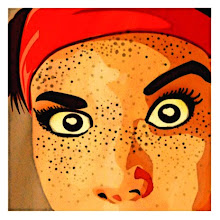Booktalk: The Cat Ate My Gymsuit by Paula Danzinger
By Julia Graves
I hate my father. I hate my school. I hate the principal because he wasted to fire Ms. Finney. These words are said by the main protagonist Marcy Lewis which is used to open The Cat Ate My Gymsuit and set the stage for what is to come. Gymsuit was written in 1974 by Paula Danzinger and it was published through Puffin Modern Classics.
The Cat Ate My Gymsuit centers around a young, thirteen year old girl named Marcy Lewis who struggles with the onset of puberty, weight issues, family issues and her first year of high school, a nightmare for a shy, fat, self conscious girl. In the beginning of the novel, she is unimpressed with her teachers until a new English teacher, Ms. Finney, arrives and with her arrival begins character changes in Marcy. Ms. Finney is a college educated woman who is in the process of attaining her master’s degree, (a rare occurrence during the time that this book was written) and teaches English in an unorthodox way as she emphasizes on compassion, conversation and interaction between students to help them learn the subject matter more effectively. Ultimately, her unorthodox teaching, her personal interaction with the students and her resistance to performing the pledge of allegiance gets her suspended from teaching (not fired…yet) and with Ms. Finney about to lose her job, Marcy, (her “crush”) Joel, (her friend Nancy) and (the smart kid) Robert all try to devise a plan to get Ms. Finney reinstated for teaching in their high school.
This is a very simple outline for the plot of the story but the plot is not very important as Danzinger wants the reader to identify with Marcy and understand that this is her story and how this young woman (Ms. Finney) changed her life.
Marcy’s weight issues are central to the story as it adds a realism to the character as Marcy is an accurate representation of the fears and physical expectations of young, teenage girls. Throughout the novel she is extremely self deprecating and often refers to herself as a blimp especially in comparison to her classmates in gym class. Her self- loathing becomes more and more tempered after Ms. Finney orchestrates “Smedley” (after an English book character used to help explain grammar through written means), a social club with an emphasis on reading and discussion. This club was focused to make the kids reach out to one another which thusly made Marcy reach out.
Before Ms. Finney’s arrival, Marcy’s family life seemed pretty bleak. Her father is verbally abusive towards Marcy and who berates, insults and yells angrily at her on a day to day basis while her mom weakly tries to diffuse the situation. Marcy’s family dynamic is pivotal to the novel as when Marcy changes so does her Mom. Danzinger seemingly wrote Marcy’s family in a way to illustrate the beginnings of the feminist movement as toward the end of the novel, Marcy has much more self confidence due to her standing up for Ms. Finney and Marcy’s mother was so inspired by Marcy’s actions that she decided to return to college and to get a job as well.
Through Ms. Finney’s direct and indirect actions, she served as not only a teacher but rather a catalyst for a change, a symbol to self identity and inspiration to the youth. When she was in danger her students fought for her, rebelled against their principal and petitioned the district, a feat the students probably would never have done without her.
At the time this book was written there was political unrest with issues such as the Vietnam War, the budding Feminist Movement and the recent Civil Rights Movement; Danzinger found a way to incorporate these issues into a 147 page, young adult novel. Marcy’s actions challenged and inspired her mother to become a different woman, a working and educated woman. Marcy and her fellow students peacefully petitioned their school and fought for what they thought was “right” and “fair” and Marcy found a cause bigger than herself which helped her grow.
I feel that this book should be taught in school as it raises the issues of self- esteem, individuality and the journey to self identity. Young girls may benefit more from this book due to the main character being a pre- pubescent girl on her way to puberty and the issues that arise from that journey however I think it may induce at a base level compassion from boys for those young girls. The book ends with Marcy referring to herself as a helium balloon rather than at blimp which is a sign of acceptance and change which should be taught and applied to all the readers.
